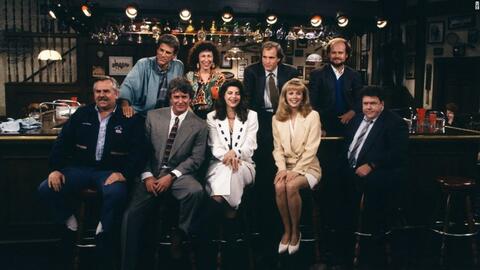Story line
St. Elsewhere was set at the fictional St. Eligius Hospital, a decaying urban teaching hospital in Boston's South End neighborhood. (The South End's Franklin Square House Apartments, formerly known as the St. James Hotel and located next to Franklin and Blackstone Squares, stood in for the hospital in establishing shots, including the series' opening sequence.) The hospital's nickname, "St. Elsewhere", is a slang term used in the medical field to refer to lesser-equipped hospitals that serve patients turned away by more prestigious institutions; it is also used in medical academia to refer to teaching hospitals in general.
In the pilot episode, surgeon Dr. Mark Craig (William Daniels) informs his colleagues that the local Boston media had bestowed the derogatory nickname upon St. Eligius since they perceived the hospital as "a dumping ground, a place you wouldn't want to send your mother-in-law." In fact, the hospital was so poorly regarded that its shrine to Saint Eligius was commonly defiled by the hospital's visitors and staff. However, despite the hospital's reputation, they employed some first-rate doctors -- including Craig, a world-class heart surgeon. As well, their administrative staff was shown to care deeply about the hospital's mission, even as they dealt with a lack of up-to-date equipment, funding, and experienced personnel.
Just as in Hill Street Blues, St. Elsewhere employed a large ensemble cast; a gritty, "realistic" visual style; and a multitude of interlocking serialized stories, many of which continued over the course of multiple episodes or seasons. In the same way Hill Street was regarded as a groundbreaking police drama, St. Elsewhere also broke new ground in medical dramas, creating a template that influenced ER, Chicago Hope, and other later shows in the genre. St. Elsewhere portrayed the medical profession as an admirable but less-than-perfect endeavor; the St. Eligius staff, while mostly having good intentions in serving their patients, all had their own personal and professional problems, with the two often intertwining. The staff's problems, and those of their patients (some of whom did not survive), were often contemporary in nature, with storylines involving breast cancer, AIDS, and addiction. Though the series dealt with serious issues of life, death, the medical profession, and the human effects of all three, a substantial number of comedic moments, inside jokes, and references to television history were included, as well as tender moments of humanity.
More details
Production Costs
Budget ( overall series ): USD $0.00









